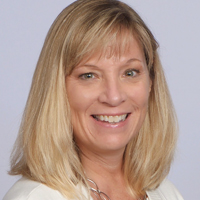 The term “Gray Divorce” refers to older divorcing couples who are close to or in retirement. This term has become very common in recent years as more and more couples in their fifties, sixties and beyond have been ending their marriages. The interesting part of this phenomenon is that divorce rates in the United States are actually declining—except for people over 50.
The term “Gray Divorce” refers to older divorcing couples who are close to or in retirement. This term has become very common in recent years as more and more couples in their fifties, sixties and beyond have been ending their marriages. The interesting part of this phenomenon is that divorce rates in the United States are actually declining—except for people over 50.
Twenty years ago, just one in 10 spouses who divorced was 50 or older. Today, according to Dr. Susan Brown, professor of sociology at Bowling Green State University and co-author of “The Gray Divorce Revolution,“ it is one in four.
There are likely many reasons for this trend, including the large population of baby boomers, longer lifespans, and a focus on being healthy and active well past middle age. There are also , many other individual circumstances contributing to the divorce trend.
No matter the reason, going through a divorce during retirement or when retirement is looming can result in some unique financial concerns. As an advisor, this is a good opportunity to help your client navigate these very complicated decisions.
Here are some issues to consider:
Creating Two Income Streams
As couples approach retirement age, or are already living on a fixed income, and are facing divorce at the same time, the creation of two sufficient income streams becomes even more difficult. And while there may be no legal end date to spousal support, that does not mean that income stream is guaranteed. If the payor retires the support can be reduced; if the payor gets sick or passes away, that income can stop immediately. Some tips to help your client:
- Consider a lump sum buyout of spousal support. This could work if there are sufficient assets. With an appropriate investment strategy, you can create the income stream your client needs and the client will no longer be reliant on the payor.
- Do not forget the RMDs (required minimum distributions). These distributions, from an IRA or 401(k)s, that will start once the account holder turns 72. They provide a forced, taxable income stream that should be factored into the cash flow analysis for support of both parties.
- Factor in pensions. Make sure you help your client obtain an accurate valuation of any pensions they or their spouse have. Find out what the payout options are and whether there are survivor benefits for an ex-spouse.
- Consider Social Security. Help your client reach out to the Social Security administration to determine their benefit and the spousal benefit they may be entitled to. Claiming on an ex-spouse’s benefit does not at all affect the spouse who receives the larger Social Security benefit. Your client may be able to begin to receive this income as early as age 62 as long as they were married for 10 years, have been divorced for two years and their ex-spouse has reached their full retirement age.
- Don’t forget the life insurance policy. Do your best to make sure your client secures a support order with a life insurance policy, if at all possible. This may be one of the most valuable assets negotiated for in a settlement between older spouses.
Deciding the Best Way to Divide Assets
It is likely that with a long-term marriage, the couple has built their wealth together with a plan for retirement, not for divorce. In divorce, the simple solution is to divide those assets right down the middle. However, that may not be the best thing for either spouse. Here’s why:
- Wage considerations. If your client is not the primary wage earner, their risk profile and which asset is more valuable to them is very different from that of their spouse. If the higher wage earning spouse passes away, their expenses stop. But for the spouse receiving support from that wage earner, it just means that their income stream stops; their expenses continue. Liquid assets in bank and brokerage accounts will be more valuable to the spouse with lower earning capability.
- Age considerations. Retirement accounts are a valuable asset as well, but make sure your client understands if they are under 59 ½ there will be a 10% penalty on top of the income tax on all distributions. Remind your client that these types of accounts should not be their primary source of liquidity or emergency funds.
- Home expenses. The home is often very special to one or both of the spouses, but as an advisor you must make sure to help them determine if they can afford to keep the house. Be sure to include all expenses including property taxes, HOA fees, insurance and an emergency fund. You don’t want your client to end up house rich and cash poor, especially if they will be living on a fixed and/or reduced retirement income number.
- Reverse mortgages. One benefit of working with older clients in the divorce process is that they may qualify for a reverse mortgage. This could be used to buy out the other spouse, purchase another home and even create an income stream. Don’t forget to consider this tool during the settlement process.
Health Insurance costs can be a big factor in gray divorce.
As a financial planner, you are likely well aware that as clients age their health insurance becomes more valuable and more expensive. As a result, this expense can be a bigger part of the negotiation in a gray divorce. Here are some points to consider:
- Coverage changes. Once your client is divorced, they are no longer eligible for coverage under a working spouse’s health insurance plan. Because of this fact, many older couples decide to file for legal separation instead of a divorce so that the other spouse can stay on a company health insurance plan. Make sure your client understands this option.The primary impact is that they can’t remarry.
- Monthly costs. If legal separation is not an option, make sure you do research into the actual monthly health care costs for the non-employee spouse and if possible, add this to the amount of support needed. Do not forget prescriptions, co-pays, deductibles, and other out-of-pocket expenses. And remember, these costs will continue to rise. They may need additional income until they are eligible for medicare.
- Long-term care. Long-term care is another major cost that aging clients face. It’s important to know that long term care premiums are often less for a married couple and the coverage doesn’t change if they divorce after the policy is written. Make sure your client is aware of this and considers working with the other spouse to get coverage for both of them before the divorce is final.
Additional Reading: Don’t Let Clients Go Broke Covering Their Divorce Expenses
Expert advice is even more important.
Planning for retirement as clients age is best done with the help of an experienced financial planner. This expert advice is even more vital when clients are facing both retirement and a divorce. The impact of the financial decisions they make are magnified by the added effects of dividing assets and income streams. These decisions can be crucial to their future well-being and can prevent a potential financial burden on the next generation. As an advisor, you have a great opportunity to provide that expert advice and guidance and truly make a difference in your client’s life.
Kathy Costas, a vice president, investment advisor and Certified Divorce Financial Analyst® (CDFA®) at EP Wealth Advisors in Westlake Village, Calif., specializes in working with men and women going through a divorce. She was appointed by the Institute for Divorce Financial Analysts as the chair of the Southern California chapter of the Divorce Alliance, a group for divorce professionals. Kathy is also the leader of the Conejo Divorce Resources Professionals group. She can be reached at kcostas@epwealth.com or 424-323-3852.







